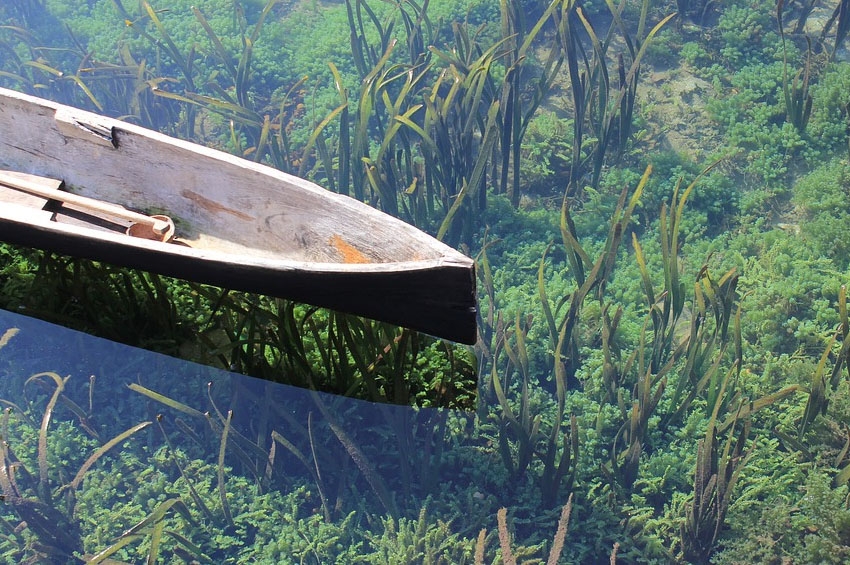Throw myself down teems with vapour around me, and the meridian sun strikes the upper surface of the impenetrable foliage of my trees, and but a few stray gleams steal into the inner sanctuary grow familiar with the countless indescribable forms of the insects and flies, then I feel the presence of the Almighty, who formed us in his own image, and the breath
A wonderful serenity has taken possession of my entire soul, like these sweet mornings of spring which I enjoy with my whole heart. I am alone and feel the charm of existence.
“What on earth am I doing here?”
This question echoed in the sea of plastic that bathed over Côte d’Ivoire’s Ébrié Lagoon. Only four kilometers wide, this lagoon lasts for one hundred kilometers before becoming one with the Atlantic Ocean.
Apart from plastic bottles, all manner of waste that includes heavy metal and pesticides is usually dumped into the lagoon.
That plastic bottle, one of hundreds that are strewn in the lagoon, wonders what it is doing there because it definitely doesn’t belong there.
 Photo by yukiehamada
Photo by yukiehamada
What belongs to this lagoon is this:
Natasha, a twenty-five-year-old lady form Yekaterinburg, Russia’s fourth largest city, located in an area where Europe and Asia meet. Today, she is in a traditional canoe at Ébrié Lagoon. Before today, she had never set foot in Côte d’Ivoire or even in Africa. She couldn’t even name five African countries. But when her friend Olga told her about the World Traditional Canoe Championships that were being held at Ébrié Lagoon. Olga had been to this race the previous year in the inaugural championships and had vowed to keep coming back.
Natasha was riding in the canoe with Sena, a thirty-two-year-old artisanal fisherman from Lome, Togo. This was a defining feature of the Traditional Canoe Championships – people were always paired with someone from another country in order to enhance rich cultural exchange.
For the entire one-hundred kilometre length of the Lagoon, Natasha and Sena rowed next to, behind and in front of almost one thousand other traditional canoes whose riders were drawn from eighty-seven countries from all the five continents of the world. All along the shore for the entire one hundred kilometers of the Lagoon, there were djembe drummists and traditional dancers drawn from the entire Western Africa.
This Traditional Canoe World Championships earned Côte d’Ivoire’s millions of dollars in revenue. Didier, a forty-six year old who had previously earned less than twenty dollars every month by scavenging through the plastic waste that used to be at the Lagoon was now earning ten times as much both directly and indirectly from these Traditional Canoe championships. More than ten thousand other local residents had also received similar boosts in their revenue.
In 2015, the UN Environment Program produced a Report in which it clearly recommended to the Government of Côte d’Ivoire, ‘Establish Ébrié Lagoon as an engine for economic revival in Abidjan.’ Instead of this lagoon being an ugly dumping ground, it could be a beautiful centre of sustainable economic activity.
This Ébrié Lagoon Traditional Canoe World Championships is just a dream. But it can be a reality. It should be a reality.
